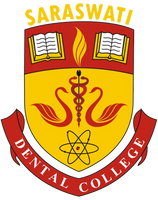
Cone Beam Computed Tomography (CBCT) is a valuable imaging technique for evaluating the morphology of the pterygoid hamulus, a bony projection from the sphenoid bone. The pterygoid hamulus is an important anatomical landmark in the maxillofacial region, and its morphology can have implications for various clinical procedures and conditions.
Overview of the Pterygoid Hamulus
- **Anatomy:** The pterygoid hamulus is a hook-shaped bony projection from the medial pterygoid plate of the sphenoid bone. It serves as an attachment point for the pterygomandibular raphe, which connects to the soft palate and contributes to the formation of the palatine aponeurosis.
- **Function:** The hamulus plays a role in the functioning of the soft palate and the attachment of the muscles involved in swallowing and speech.
Cone Beam Computed Tomography (CBCT)
**CBCT** is an advanced imaging technique that provides high-resolution 3D images of the maxillofacial region. It is particularly useful for assessing complex anatomical structures like the pterygoid hamulus.
Evaluation of Pterygoid Hamulus Using CBCT
1. **Image Acquisition:**
- **Procedure:** The patient’s head is positioned within the CBCT machine, and a series of x-ray beams are rotated around the patient to capture detailed images from multiple angles.
- **Resolution:** CBCT provides high-resolution, cross-sectional images that can be reconstructed into 3D models.
2. **Morphological Analysis:**
- **Shape and Size:** CBCT allows for precise measurement of the length, width, and overall shape of the pterygoid hamulus. Variations in these dimensions can be assessed in detail.
- **Orientation:** The orientation of the hamulus relative to adjacent anatomical structures can be evaluated, which is critical for surgical planning or diagnostic purposes.
- **Anomalies:** CBCT can help identify anatomical variations or anomalies, such as an unusually shaped or positioned hamulus, which might affect surgical approaches or dental procedures.
3. **Clinical Relevance:**
- **Surgical Planning:** Detailed visualization of the pterygoid hamulus is essential for planning surgeries in the maxillofacial region, such as orthognathic surgery or implant placement.
- **Dentistry:** In orthodontics and prosthodontics, understanding the morphology of the pterygoid hamulus can impact the design and fit of dental appliances.
- **Pathology:** CBCT can aid in identifying pathological conditions affecting the hamulus or surrounding structures.
4. **Image Interpretation:**
- **3D Reconstructions:** CBCT allows for 3D reconstruction of the pterygoid hamulus, providing a clearer view of its spatial relationship with other structures.
- **Measurement Tools:** Digital tools within CBCT software enable accurate measurement of the hamulus and adjacent anatomical features.
Advantages of CBCT for Evaluating the Pterygoid Hamulus
- **High Resolution:** Provides detailed and accurate images of the bony structure.
- **3D Visualization:** Allows for comprehensive evaluation of the hamulus in three dimensions.
- **Non-invasive:** Provides detailed information without the need for invasive procedures.
Limitations
- **Radiation Dose:** Although lower than conventional CT, CBCT does involve radiation exposure, which should be minimized.
- **Cost and Accessibility:** CBCT is generally more expensive and may not be as readily available as traditional x-rays.
Conclusion
CBCT is a highly effective tool for evaluating the morphology of the pterygoid hamulus, providing detailed, three-dimensional images that enhance our understanding of its anatomical variations and relevance to clinical practice. This detailed evaluation is crucial for precise surgical planning, orthodontic treatment, and diagnosis of pathologies in the maxillofacial region.


No Any Replies to “Cone Beam Computed Tomography Study for Evaluation of Morphology of Pterygoid Hamulus”
Leave a Reply